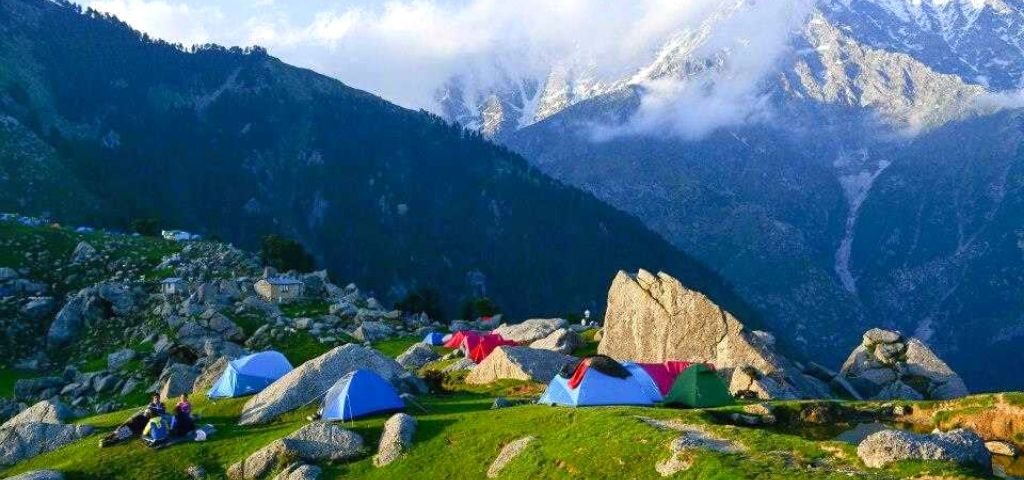The Kedarkantha Trek is your best bet when it comes to hiking in India in winter. Kedarkantha makes a tremendous journey of virgin snow with beautiful campgrounds and surprisingly large clearings in the forests, from December to April. So, when in winter you plan to walk through the Himalayas, take the Kedarkantha trek. You will not regret it. You will not regret it. Check this magnificent blog for an idea of the trek.
Snow till April
The Kedarkantha Trek is your best bet when it comes to trekking in India in winter. Kedarkantha offers a tremendous tour in the virgin snow, from December through April, with lovely campsites and surprising clearings in the forests. Then, in the winter, if you plan to walk the Himalayas, go to the Kedarkantha trek. You’re not going to sorry. See this wonderful blog for an idea of the trek.
Prettiest campsites
This trek offers the most beautiful Himalayan campsites. All the walks can’t boast like Kedarkantha trek about the beauty of their campsite. Their beauty makes each of their campsites unique. In the clearing of huge pine trees the Juda-Ka-Talab campsite is located, the Kedarkantha base campsite is on an open meadow with snow peaks all around, and the Hargaon camp is again on pine and oak clearing. In their beautiful environment, it’s almost like each one of them competes.
Best drive in Himalayas
You pass through Mussoorie, Nowgaon, Purola, Mori and Natwar on the road to Kedarkantha. This is such an exquisite remote route that it is one of the most beautiful journeys in the Himalayas in India. Trekkers have to pay attention in particular to the Purola section right until the base camp, Sankri.
The fun to walk on a brown leaf carpet
In a dense pine forest, the Kedarkantha trek begins. A tapestry of brown leaves covers the trail. This is a crunchy pleasure to walk!
Snow peaks all around
It’s a great advantage of Kedarkantha trekking. You’ll see an amazing view of the famous mountain tops around you right from the base camp of Kedarkantha. It’s as if you touched the sky when you get to the Kedarkantha summit and all of the summits are in the eye!
Best time to trek
As a winter walk, Kedarkantha is best done, from December to April. During these months, it’s an outdoor snow trek. The first snow can be seen from Sankri to Juda Ka Talab on the very first day of the trekking.
In addition, one of the few hikes in winter is Kedarkantha. In winter, most trails get too much snowfall, weather is not always easier and the whole trek can be inaccessible. The Himalayas are not always accessible. Kedarkantha, however, promises the right amount of snow while allowing you to enter a summit of 12,500 ft! At sunrise, it’s a paradise feeling at the top. In the majestic peaks around you, there is the harmony of beauty and stunning golden light from another era. It’s a view beyond every superlative.
So you should register for the Kedarkantha Trek if you would like to hiking through the Himalayas around the Christmas holidays or perhaps to start a new year at the top.
Difficulty
In the summer we considered Kedarkantha to be an easy trek and in the winter a moderate trek. What does that mean now?
Well, first stuff. The main factors that make the difficulty of a trek when traveling through the Himalayas are:
- How high is it – the highest altitude
- How the trail is – gravely, slippery, smooth, easy and so on?
- How near civilization it is to evacuate emergencies
- How large the path can be easily seen
- What is the steepness of the trail? (ups and downs)
- There are dangerous areas on the road—such as guts, gaps, rockfall, overhangs.
The trek begins at approximately 6,000 ft and reaches 12,500 ft. This means that over four days you reach an altitude of 6,500 ft. In average, you get about 1,500 ft daily, which is an excellent increase in altitude in a day. Most of the indian Himalayas are forced to ascend, which is not advisible but unavoidable due to the lack of campgrounds between them. They are more than 2000-3000ft daily. The trek to Kedarkantha however goes up in a comfortable pace and every day you gain about 1500 ft.
The trail is easy on the ground. The trail runs through lovely forests from Sankri to Kedarkantha Base. Most of the forest floor is therefore crunchy brown leaves, a delight to walk along! The first two days of the trek, which you start to walk in snow, lead through the forest.
The entire trail is well-marked so that even a solo walker can easily navigate. The ascent to the top of Kedarkantha is covered in snow in winter, and without a guide this could be a bit tricky, but as the destination is obvious, there’s no chance to be lost!
Comparing Kedarkantha with a handful of the hardest hiking trails in India such as the Rupin Pass or the Goechala Trek, the difficulty is extremely low. Then you go on Kedarkantha, in the winter, if you want to walk the Himalayas and you’re a first timer.
